One day before the start of Donald Trump’s inauguration, on the 16th Jan 2017, we recorded an authoritative presence for the Environmental Protection Agency’s (EPA) climate change web pages. On the 28th of April 2018 the EPA announced website changes and content was removed. Among it was a large amount of climate change content focused towards children’s education. In the lead-up to #COP24, the United Nations climate change conference, we take a deeper dive to see how significant that content was and discover that despite attempts to hide it, the content is slowly re-gaining visibility in search results.
Here in Bonn, Germany, the topic of climate change is never far away. The United Nations Framework for the Convention on Climate Change (UNFCCC) headquarters is just a 10 minute cycle ride from where I’m writing this. Data on search engine positioning for climate change content is even closer so after we read a recent article about the Environmental Protection Agency’s removal of climate change content in The Guardian, we decided to look deeper.
Today, the EPA ranks as a relatively big site, despite waning visibility over the previous 5 years. Our historical data shows that it has recently become more visible in search results than it was before the current president was inaugurated. The EPA website is big though, and covers thousands of topics from waste and homes to painting and food. In reality, climate change was a small part of the website.
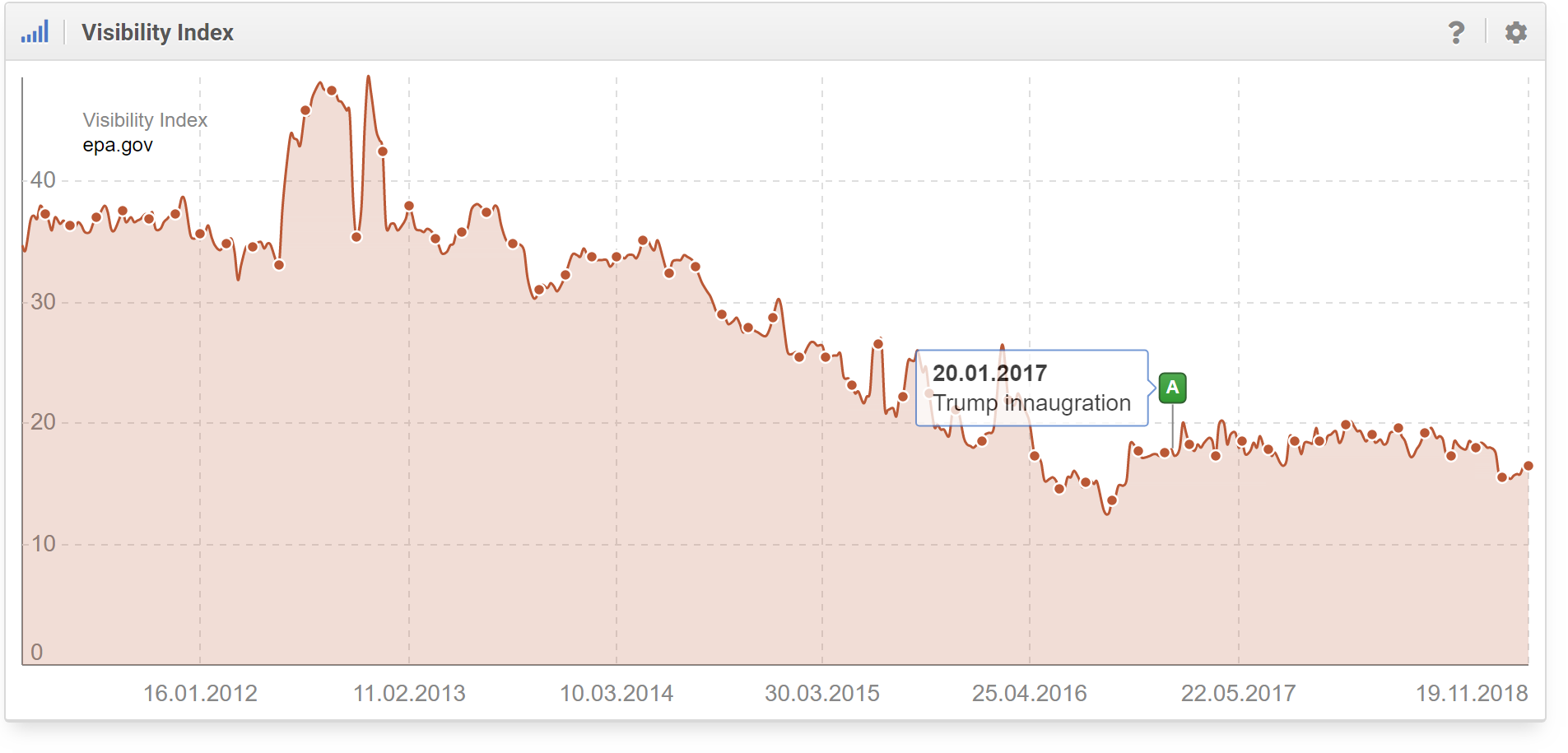
If we look into the climate change aspects of the website we begin to see how important it was. By rolling back the date to 16.01.2017, the week in which Donald Trump was inaugurated, we can expose the directories that were ranking. The EPA has a long history of moving climate change content around as you can see in the graph below.
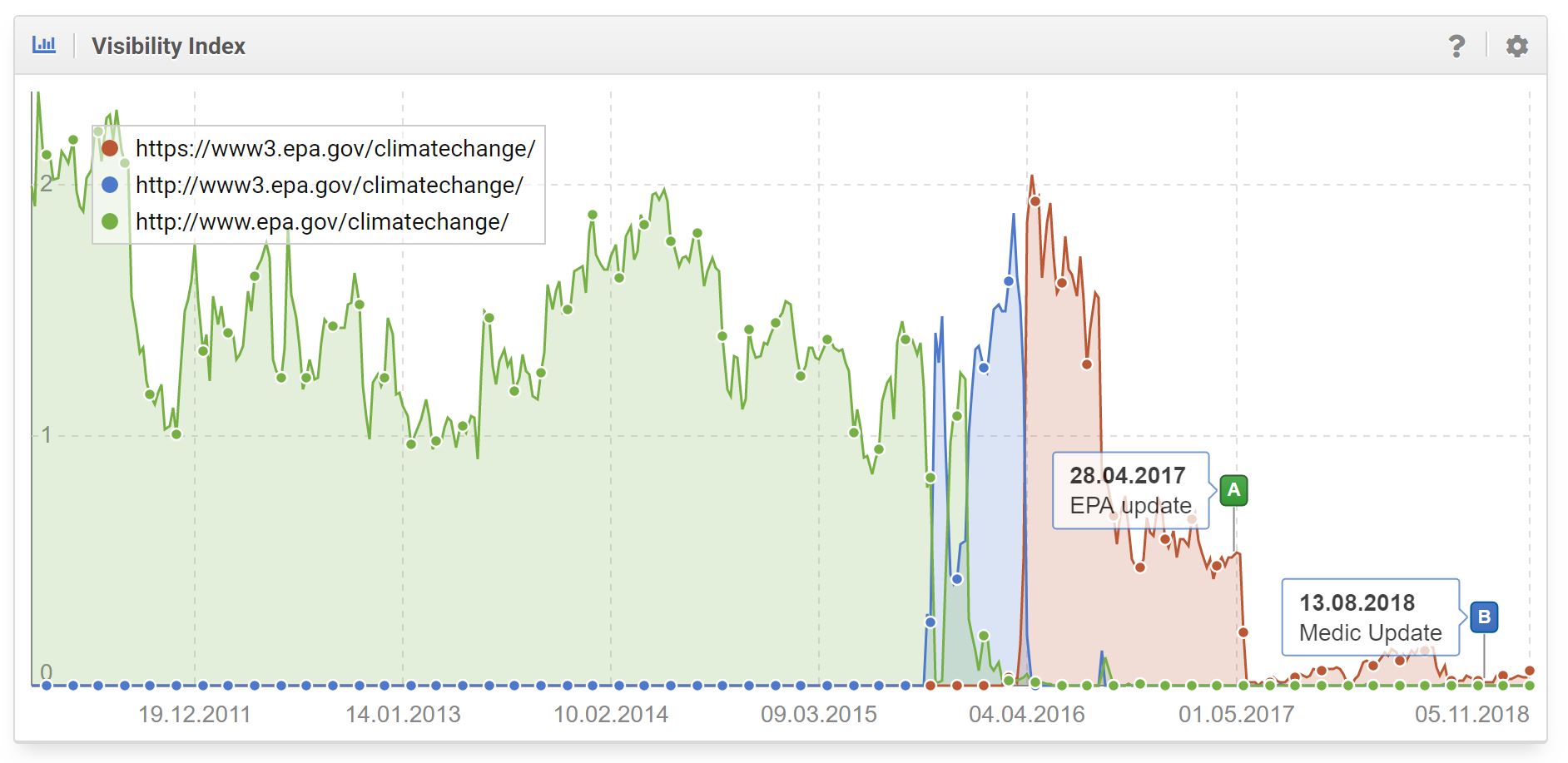
One of the most significant and URLs was https://www3.epa.gov/climatechange/, shown in red in the graph above.
Don’t ask why the EPA chose to move from the host www to www3. Epa.org has over 40 subdomains active today so one can imagine a dispersed set of webmasters. More important are two things. Firstly, look what happened after the EPA update on the 28th April 2017. The Guardian reports,
The US Environmental Protection Agency’s main climate change website is “undergoing changes” to better reflect “the agency’s new direction” under Donald Trump.
As protesters protested about climate change inaction, Google started removing non-existent EPA pages from its index. “Climate Change” ranking crept back though and continued to rank until April 2018 when it disappeared again. Here are the SERPs in the USA for “climate change” on the 23.04.2018, taken from our databases. It shows the ‘kids’ content ranking after the first ‘removal’ in 2017.
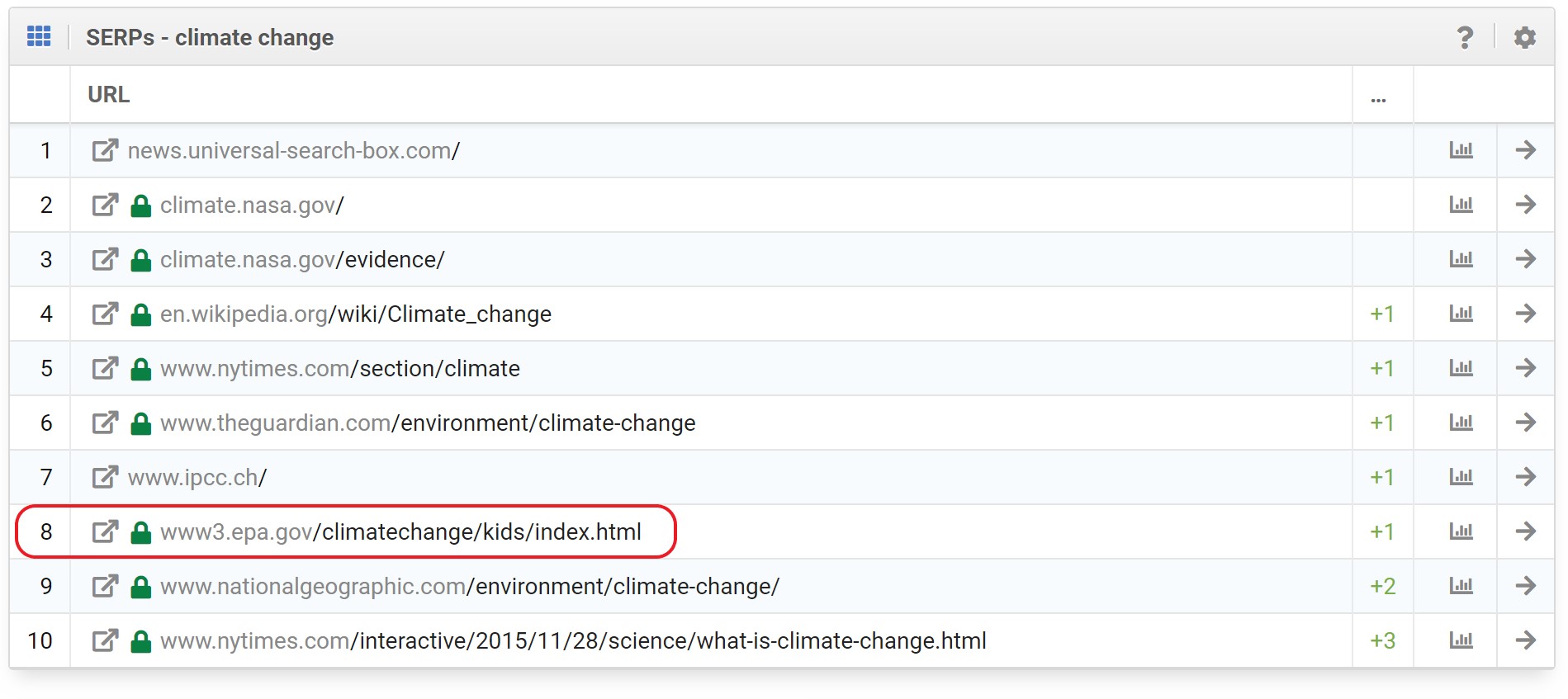
The EPA has position 8, a page 1 result on the Google search results. The search results, two weeks later are shown below…
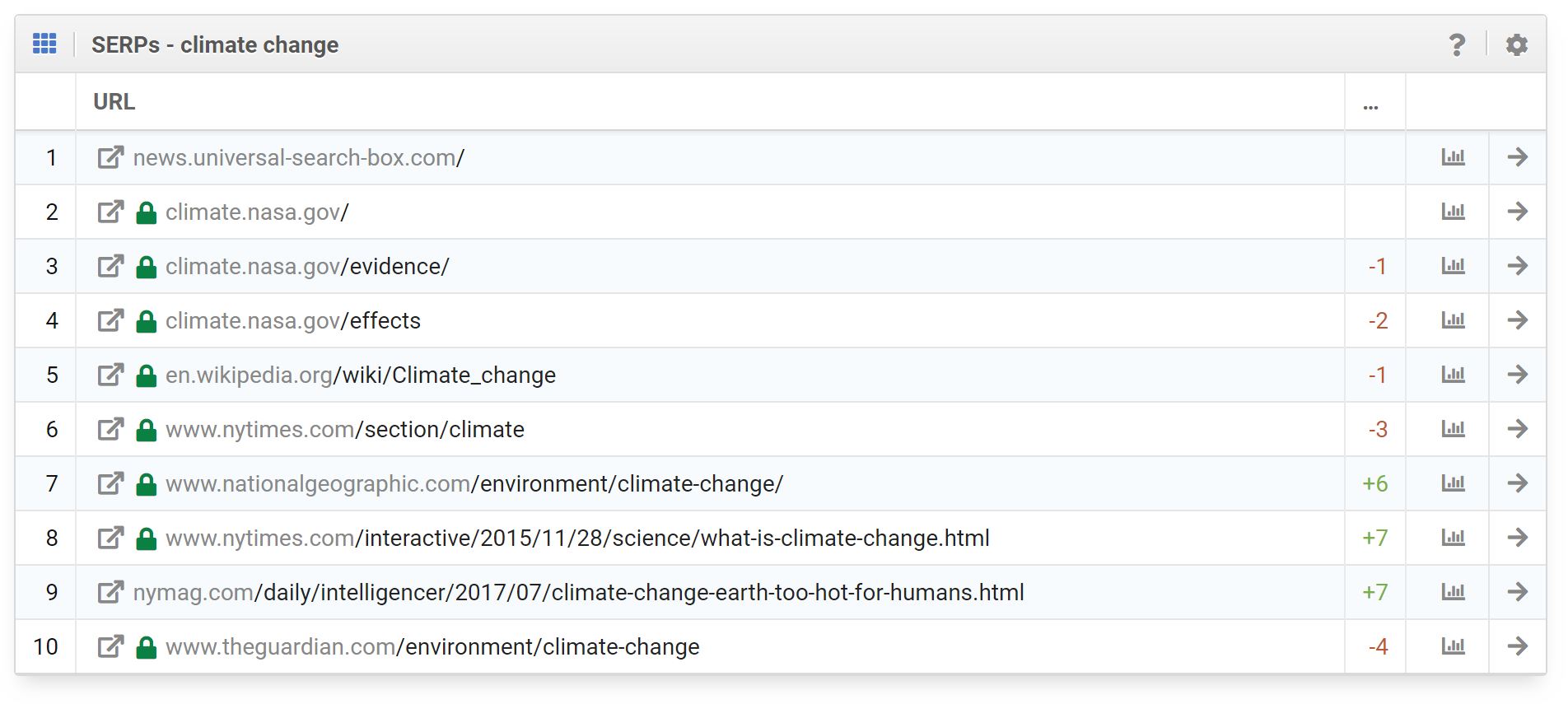
Here we see the position for “climate change” dive, disappear from the top-100 and, recently, return to around 50th position. Google has found relevant content again.
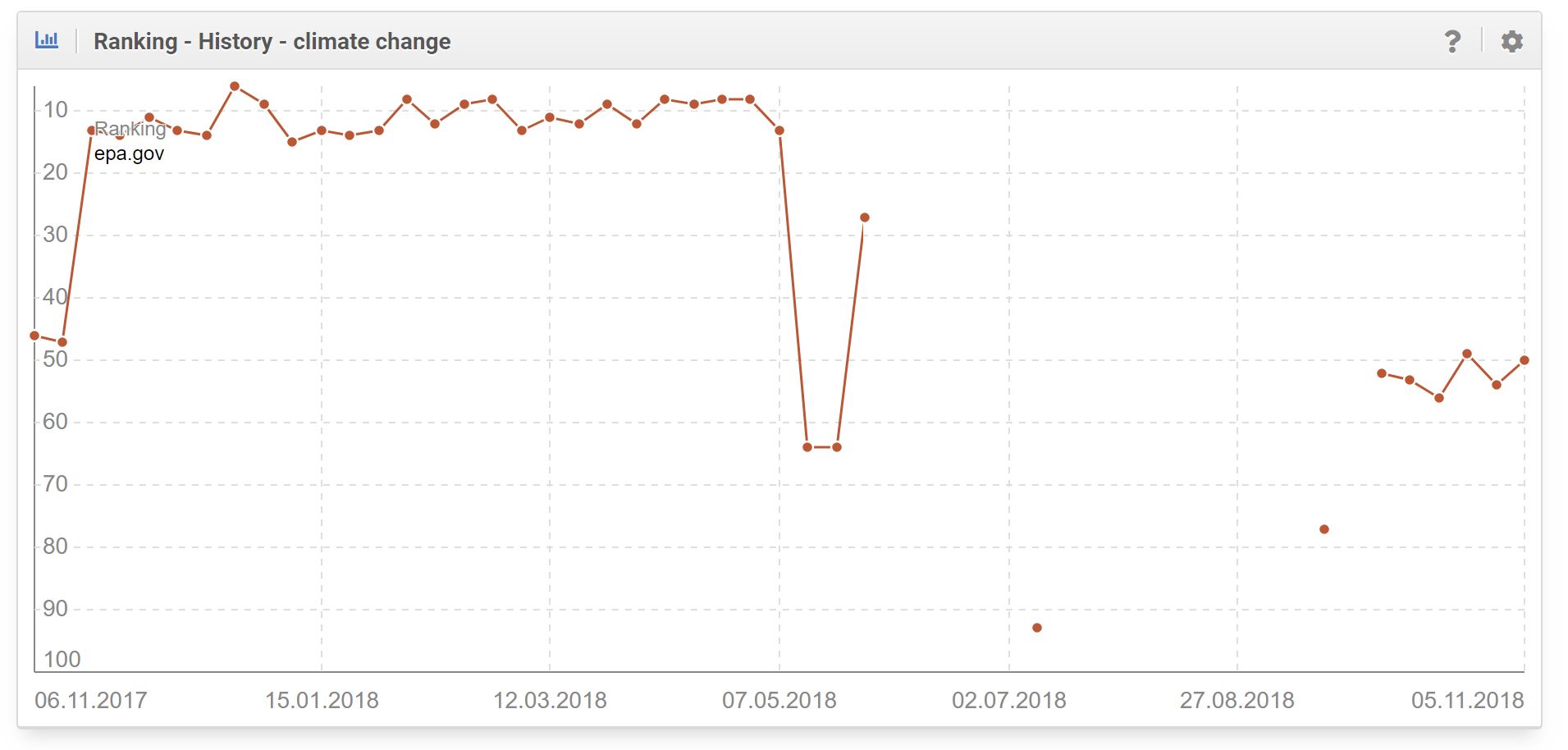
Important educational content removed.
A large proportion of the ranking URLs appear to come from a directory that focuses on a topic that climate change advocates would rank as critical; Education for children.
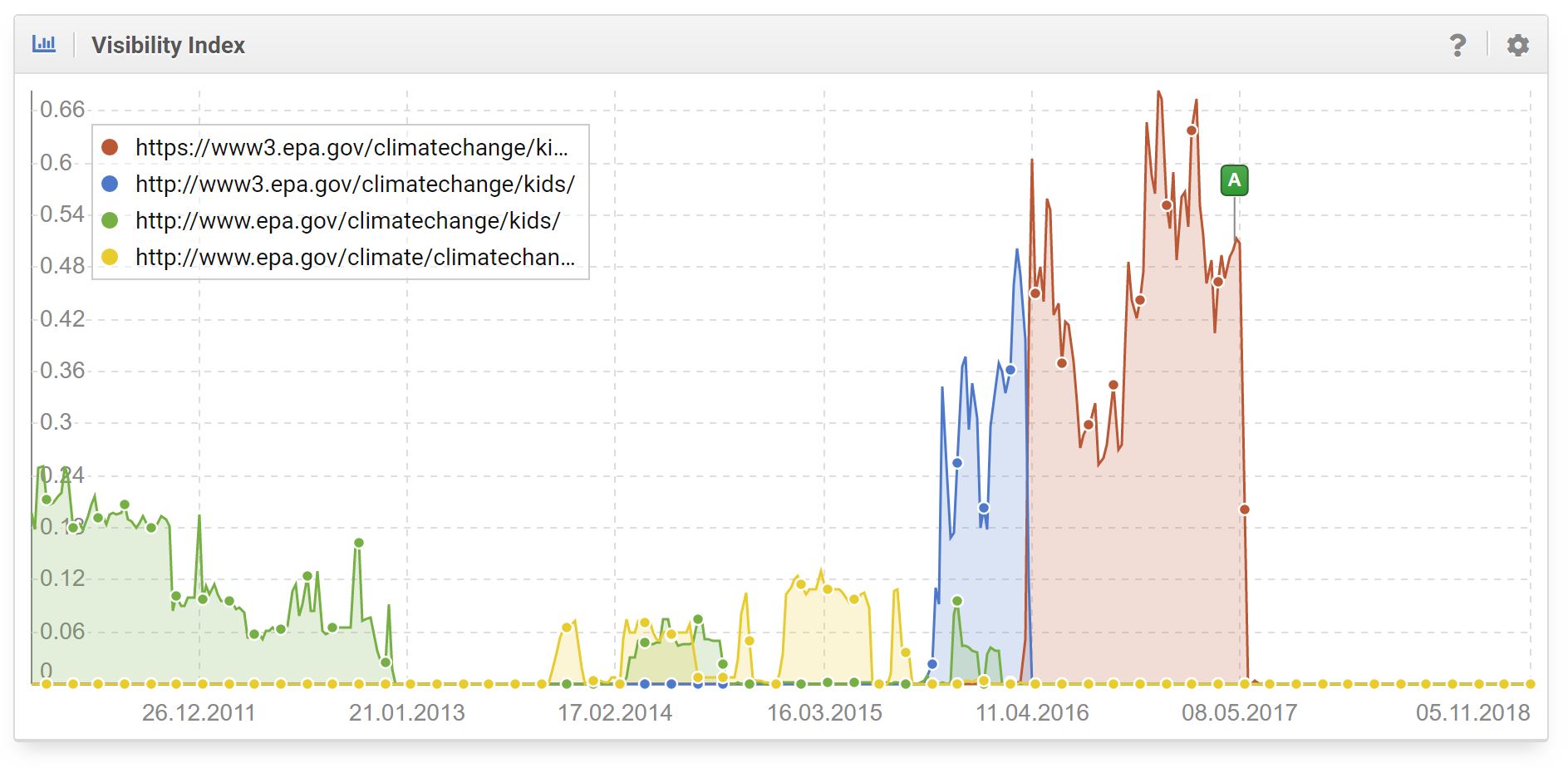
The above graph shows 4 URLs where educational content on climate change for children existed. The last one, https://www3.epa.gov/climatechange/kids/ had the largest visibility of all with around 50 URLs ranking strongly.
The loss of educational material for kids is always worth taking a further look into. We’ve done that, and come up with some good news. Google found the content again. First, though, a list of important directories that were hidden.
- https://www.epa.gov/climatechange
- https://www3.epa.gov/climatechange
- https://www.epa.gov/climate-impacts
- https://www.epa.gov/climate-change-science
It’s not gone, just forgotten (by the SEO.)
In recent weeks of SERPs data we’ve seen some of the lost URLs pop up again in search results. An investigation into the URLs reveals a couple of hiding places for the content. It’s not gone. Once again, Google is rediscovering it.
The Earth’s climate is changing, and people’s activities are the main cause.
One could argue that the SEO here is very poor. There are obvious duplicate content and back-link issues. Here’s one duplicate-content example, showing the source of the quote shown above. Note the double-slash and archive subdirectories.
- https://www3.epa.gov/climatechange//kids/basics/index.html
- https://archive.epa.gov/climatechange/kids/basics/index.html
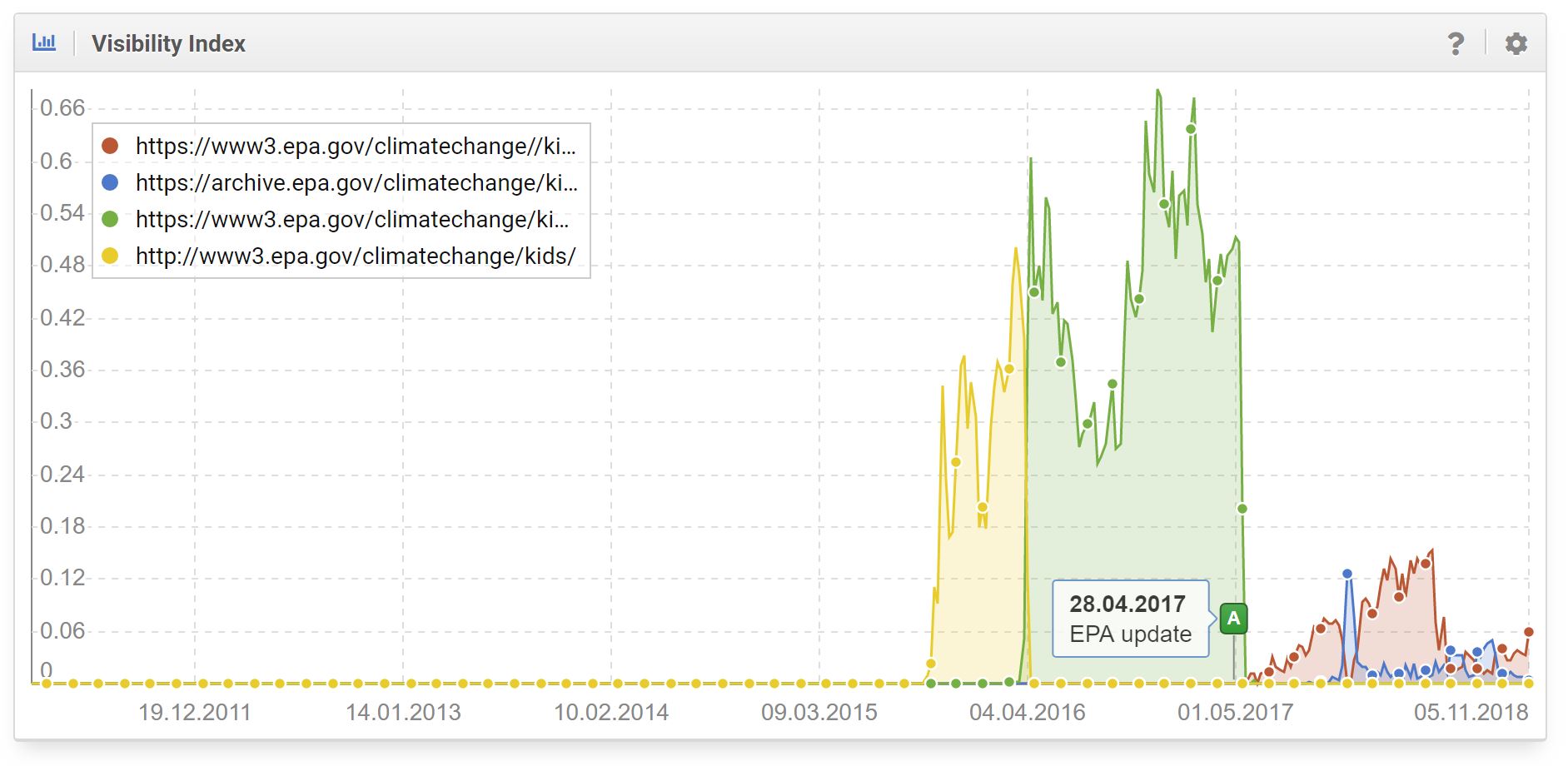
A closer look reveals that the duplicate content is causing problems for Google as flips between indexing of the two locations. Until an SEO fixes that, the content is unlikely to rank well in the future.
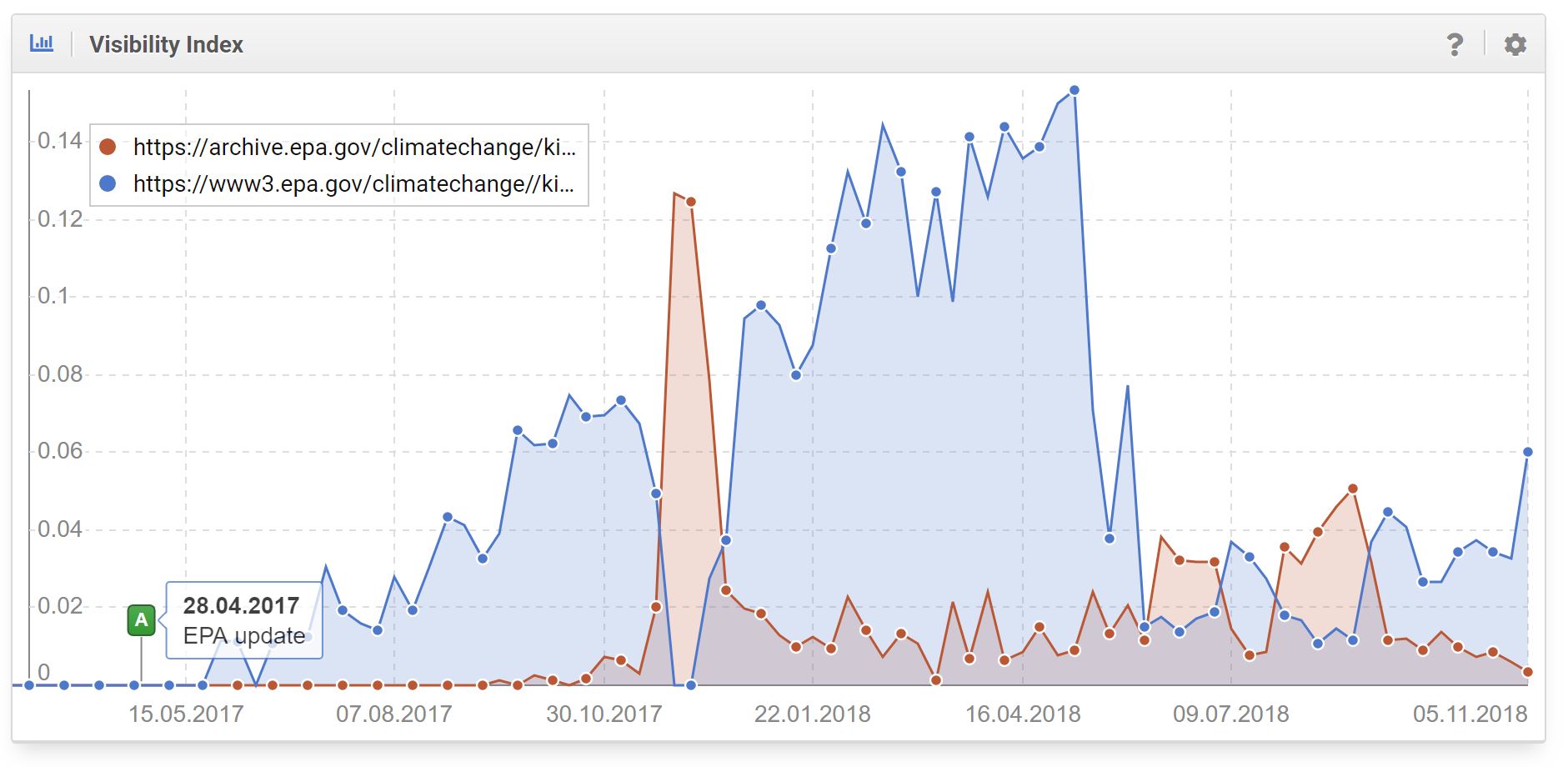
Questions remain. Did the webmaster choose to discretely archive and hide the content instead of deleting it? Will these archives remain? Will the duplicate issue be solved? Is there a new webmaster that has no idea of whats happened?
Google is good at finding content but it needs help. Perhaps, as COP24 draws closer, someone attending the meeting will have read this and will help to ensure that content is always accessible and visible via Google. That’s SEO!
Update: Feb 13 2019: The ‘//kids’ content is still ranking on Google. In some cases well. Search for “greenhouse gas” in the USA and look what turns up in position #2.
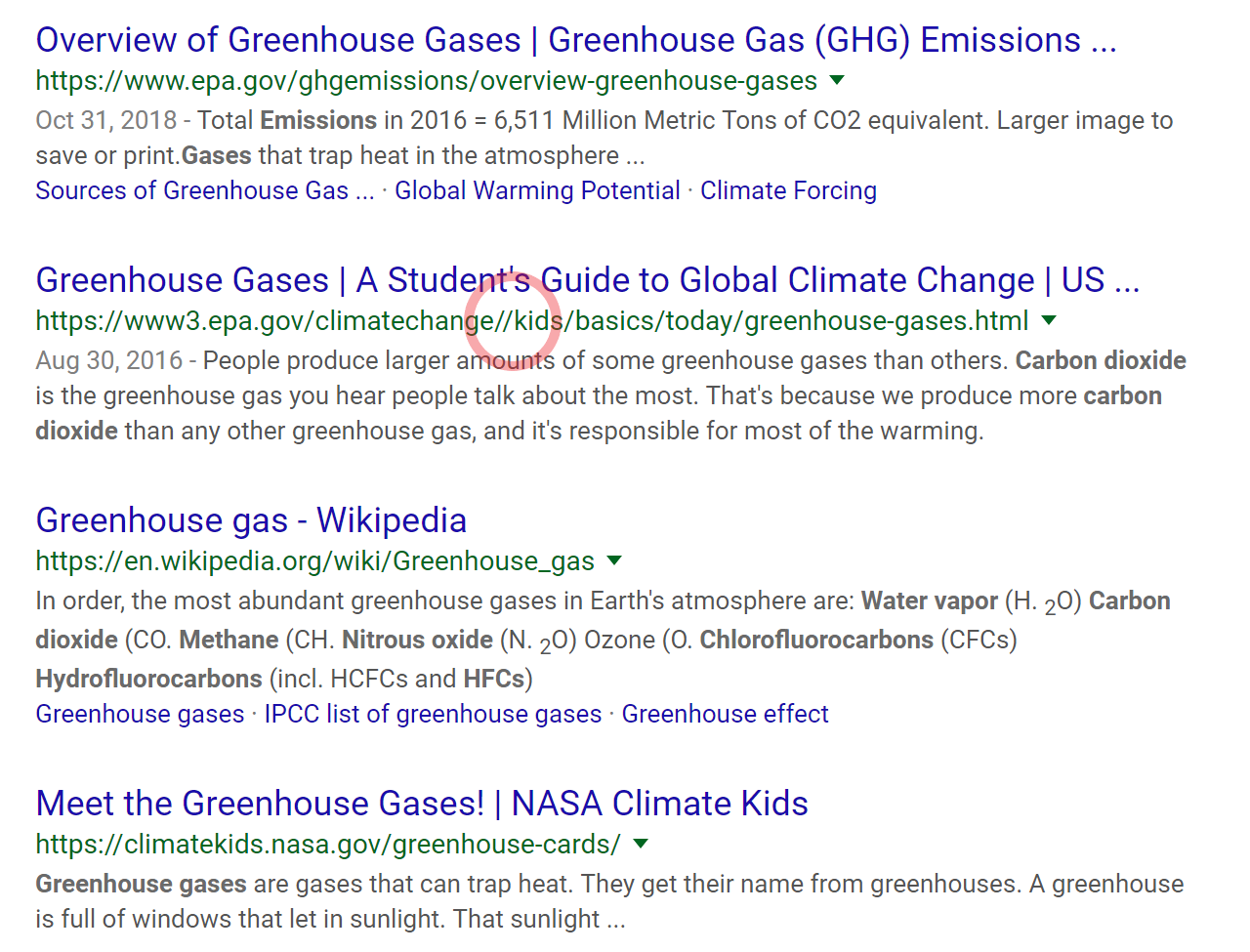
Update: July 2019. It appears that the double-slash kids directory is no longer ranking. The archive still exists.
